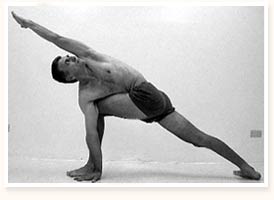 The body’s main source of energy is Carbohydrates. When you do any type of physical or mental activity, your body is using carbohydrates. Carbohydrate is synonymous to fuel. When you take out the carbohydrates from your diet, you become a sluggish, tired, lethargic soul. However, if you don’t use that energy, it'll be stored as fat. A high protein low-carb diet is extremely dangerous over a period of time. Our body is designed to eat fruits, grains, vegetables and not just flesh. The body starts to break down after a while on too much protein. The weight you initially lose in a low carb-diet is water. The body needs carbs to burn and to make energy.
The body’s main source of energy is Carbohydrates. When you do any type of physical or mental activity, your body is using carbohydrates. Carbohydrate is synonymous to fuel. When you take out the carbohydrates from your diet, you become a sluggish, tired, lethargic soul. However, if you don’t use that energy, it'll be stored as fat. A high protein low-carb diet is extremely dangerous over a period of time. Our body is designed to eat fruits, grains, vegetables and not just flesh. The body starts to break down after a while on too much protein. The weight you initially lose in a low carb-diet is water. The body needs carbs to burn and to make energy.If you don’t consume the adequate amount of carbs, and you are active, you are doing a bad thing to your body. If your body is active and it does not have enough carbs to fuel itself, the body will be on a starvation mode. Thus, by consuming fewer carbs, your body will start to burn its fat stores. this may sound good, keep in mind that your brain needs carbs and fat as well. Carbs should never be eliminated from your diet for any period of time. Your brain will slow down with a low carb diet. Your body needs carbs for energy in order to access your fat.
Simple carbohydrates versus complex carbohydrates
Simple carbs are found in fruits and vegetables. Since the simple carbs are small, they are easier for your body to break apart and use, so they are utilized as your first source of energy.
The complex carbs, such as pasta, take more time to break down and the energy release is slower than simple carbs, so your body utilizes this energy source next. Fat takes much longer to break down, so it is utilized as the next source of energy.
Note that if your body is running low on carbs, or you are doing too much activity without enough carbs, then your body can't access the fat fast enough as a result, it will utilize protein as energy. Protein is stored in muscle tissue. This will cause you to lose muscle mass if you do not eat enough fats and carbs.
It is better to eat a majority of your simple carbs in the morning such as fruit to rev up your body for energy. Then eat the majority of the complex carbs morning to afternoon. However, you lessen the carbs in the evening to bed time. When you go to sleep, your metabolism slows down. Any carbs that were not already burned will still be there. Protein and foods such as yogurt and cottage cheese are excellent before bed, because by the time your body processes these foods you will be awake again.
The more active you are, the more carbs you need. A nutritionist should be consulted if you want to know the exact amount of carbs your body needs. 'Low carb' is a catch phrase, and all it means is that you cut out most of the foods containing carbohydrate from your diet. And that is obviously bad. The most important thing in any regime is to consume sensible portions of proteins, fats, and carbohydrates; yes, you need carbs! Your source of energy comes from carbohydrates. If you are oftlinereally concerned, talk to your doctor or a nutritionist. A food log is your best bet for this.
To lose body fat, you should up the cardio exercise, and pay close attention to your diet. Don't take carbohydrates out of your diet. Eat six small meals a day to keep the metabolism running high. Include some strength training in your routine. More muscles burn more fats. The only way to loose weight is to consume fewer calories than you burn, as you keep a calorie deficit. Roughly 3500 calories are equal to one pound of body weight, so keeping a deficit of 500 calories a day, depending on your body type should turn into one pound a week.
You don't want to have a deficit of anything more than 800-1000 per day without seeing a doctor. You need carbohydrates for your body to breakdown glucose to use for energy. The best diet is a balanced one; don't take out any single food group, and don't overdose on a single food group. Eat five to six smaller meals throughout the day; this helps keep your metabolism running. Exercise at least 30 minutes to 1hr at least five days a week while making sure you are at your aerobic rate. Keep in mind a "healthy" weight loss is losing about one to two pounds per week.
The body needs a well-balanced diet. This means that it needs everything, including protein, carbs, and even fat. There is no such thing as a "bad carb." Extracting an entire food group from your diet can actually do your body more harm that good. If you want to lose weight, you need to eat a well-balanced diet, smaller meals, and keep up with the aerobics as well as some resistance training.




